
Author: Daniel Kim, Ryan Yoon, Jay Jo, Source: Tiger Research, Compiled by: Shaw Bitchain Vision
Key Points
-
Bitcoin Institutional Adoption Accelerate——U.S. 401(k) investment unlocks, exchange-traded funds (ETFs) and corporate entities continue to increase their holdings on a large scale
-
The best environment since 2021——Global liquidity is at a historical high, and major countries have cut interest rates one after another
-
From retail investors to institutional market dominance——Although there are signals that the market is overheating, institutional buying firmly supports the market downside risks
Global liquidity expansion, institutional accumulation and regulatory policies drive Bitcoin adoption
At present, the Bitcoin market is driven by three core factors: 1) global liquidity expansion, 2) accelerated inflow of institutional funds, and 3) a cryptocurrency-friendly regulatory environment.These three factors work at the same time, creating the strongest upward momentum since the 2021 bull market.Bitcoin rose about 80% year-on-year, and we don’t expect many factors to disrupt this upward momentum in the near term.
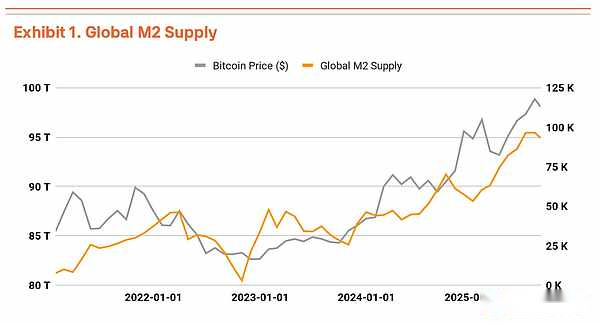
In terms of global liquidity, it is worth noting that the broad money supply (M2) in major economies has exceeded US$90 trillion, a record high.Historically, the M2 growth rate showed a similar trend to the Bitcoin price. If the current currency expansion trend continues, Bitcoin still has a lot of room for appreciation (see Figure 1).
In addition, the pressure from U.S. President Trump to demand interest rate cuts and the Fed’s dovish stance have opened the way for excess liquidity to flow into alternative assets, with Bitcoin becoming the main beneficiary.
Meanwhile, institutional investors are increasing their holdings of Bitcoin at an unprecedented rate.The 1.3 million bitcoins held by U.S. spot ETFs account for about 6% of the total supply, while Strategy (MSTR) holds 629,376 bitcoins (worth $71.2 billion).The key is that these purchasing behaviors represent structural strategies rather than one-time transactions.Strategy’s continuous buying through convertible bond issuances is particularly an indication of the formation of a new layer of demand.
In addition, the executive order issued by the Trump administration on August 7 is of great significance.Allowing 401(k) retirement accounts to invest in Bitcoin, which opens up a $8.9 trillion fund pool for Bitcoin.Even at a conservative 1% allocation ratio, it will mean $89 billion inflows – about 4% of Bitcoin’s current market value.Given the long-term holding nature of the 401(k) fund, this development not only helps Bitcoin price rise, but also helps reduce its volatility.This marks that Bitcoin’s transformation from speculative assets to core institutional assets has become a foregone conclusion.
Retail investor activity weakens, institutions drive trading volume
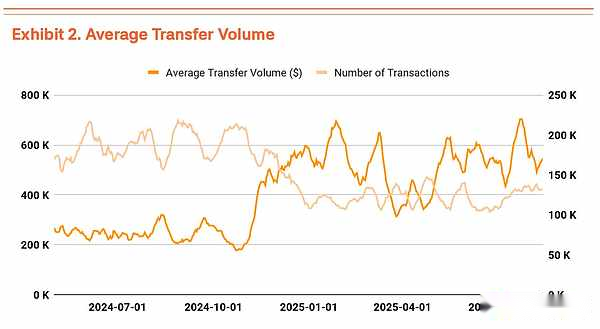
The Bitcoin network is currently reorganizing around large investors.The average daily transaction count fell 41% from 660,000 in October 2024 to 388,000 in March 2025, but the amount per Bitcoin transaction actually increased.Large-scale transactions from institutions such as Strategy have increased, expanding the average transaction size.This indicates that the Bitcoin network is shifting from a “small amount high frequency” trading model to a “large amount low frequency” trading model (see Figure 2).
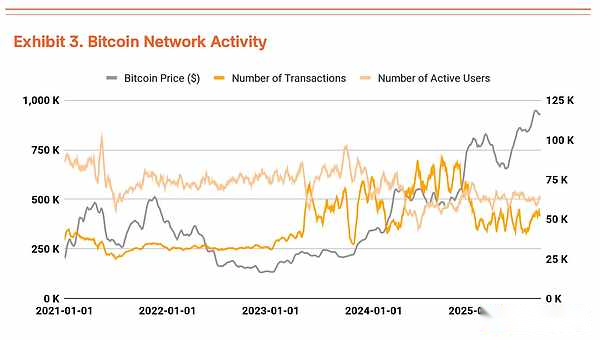
However, basic indicators show uneven growth.Although institutional restructuring has significantly driven the value of the Bitcoin network, the number of transactions and active users have not recovered (see Figure 3).
Fundamental improvements require the activation of the ecosystem through Bitcoin-based decentralized financial services (BTCFi) and other initiatives, but these are still in early stages of development and take time to have a significant impact.
Overbought, but the institutions provide support
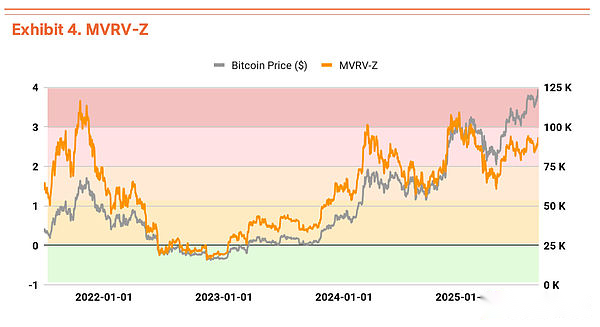
On-chain indicators show some overheating signals, but the risk of a significant downward trend is still limited.The MVRV-Z indicator (measures the ratio of current price to the average cost basis for investors) is currently in the overheating area of 2.49, and has soared to 2.7 recently, warning of a possible pullback in the near term (see Figure 4).
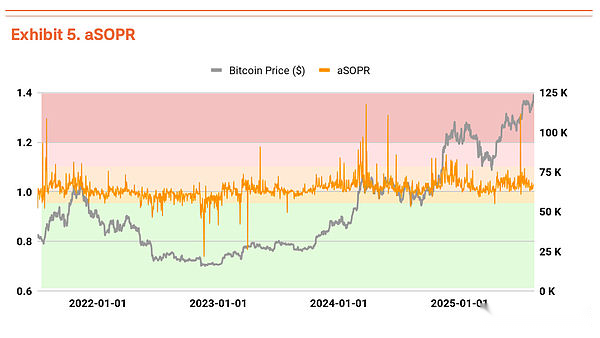
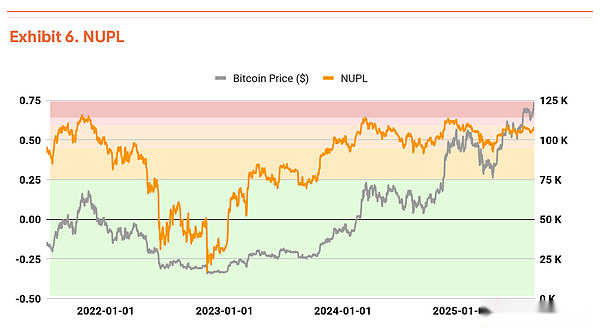
However, the aSOPR (1.019) that tracks investors’ profits and losses and the NUPL (0.558) that measures the unrealized profits and losses of the entire market are both in a stable range, indicating that the overall market conditions are good (see charts 5, 6).
In short, although the current price is at a high level relative to the MVRV-Z indicator, the actual sell-off occurs at a moderate profit level (aSOPR), and the entire market has not yet entered the over-profit area (NUPL).
Supporting this strong momentum is that institutional investors buy more than retail investors.ETFs and strategic entities continue to accumulate, providing solid support for prices.There may be a pullback in the short term, but the possibility of a trend reversal does not seem to be high.
Target price $190,000, upward potential 67%
Our TVM approach derives a target price of $190,000 through the following framework: We first determine a base price of $135,000 (excluding extreme fear and greed from the current price), and then apply a 3.5% fundamental indicator multiplier and a 35% macroeconomic indicator multiplier.
The fundamental indicator multiplier reflects the improvement of network quality – although the number of transactions is reduced, the transaction value is higher.The macro indicator multiplier captures three powerful forces: the continuous expansion of global liquidity (e.g., M2 is over $90 trillion), the accelerated institutional adoption (e.g., ETFs hold 1.3 million bitcoins), and the continuous improvement of regulatory environment (e.g., the 401(k) program eligibility unlocks $8.9 trillion).
At current levels, this means 67% upside potential.While this goal may seem radical, it reflects the structural shift Bitcoin is experiencing, namely, the shift from speculative assets to institutional portfolio allocation.







